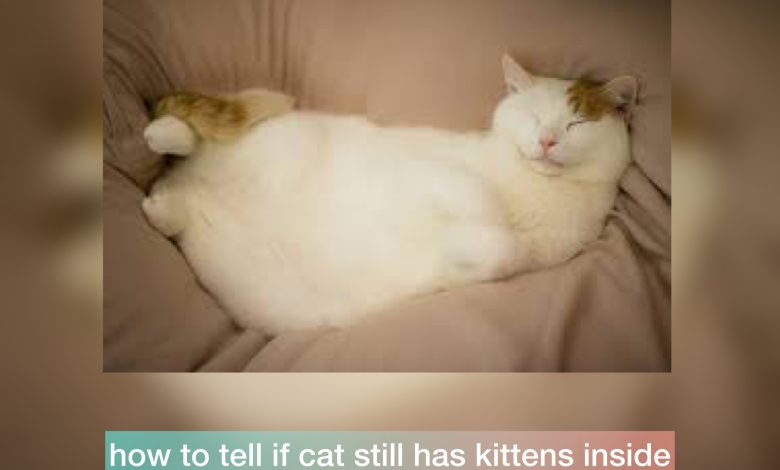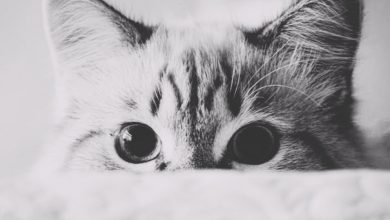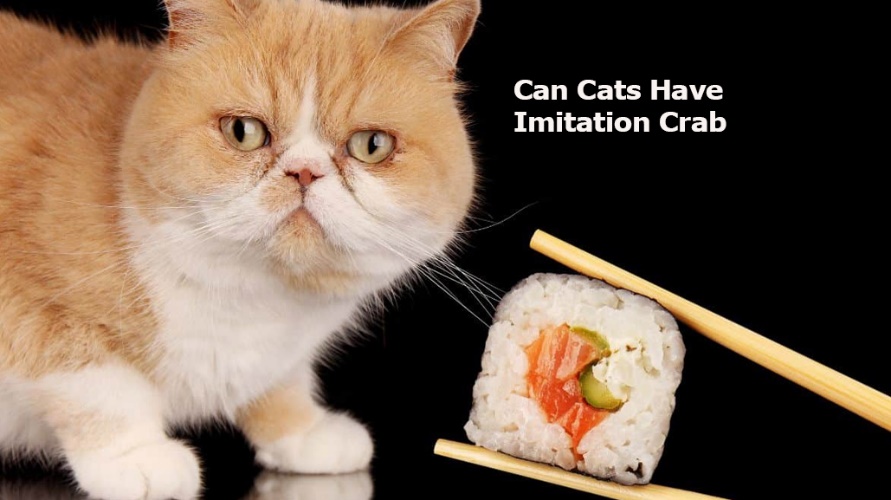How to Tell If Your Cat Still Has Kittens Inside

Welcoming a litter of kittens into the world can be an exciting experience for any cat owner. However, it’s essential to ensure that the entire litter has been safely delivered to avoid potential complications for the mother cat and her offspring.
So In this article, I will scour how to tell if your cat still has kittens inside and provide a comprehensive guide for cat owners on monitoring their cat’s pregnancy, recognizing signs of complications, using diagnostic tools, and seeking veterinary assistance. SULLPET
Signs of a Pregnant Cat
The first step in determining if your cat still has kittens inside is to confirm if she is indeed pregnant. Look for physical changes in your cat’s body, such as a visibly enlarged abdomen, increased nipple size and color, and weight gain.
Additionally, observe for behavioral changes, such as increased nesting behavior, decreased appetite, and changes in social interactions. If you suspect that your cat may be pregnant, it’s important to consult with a veterinarian for professional confirmation.
Monitoring the Cat’s Progress:
Once your cat’s pregnancy is confirmed, monitoring her progress is crucial to determine if she still has kittens inside. Keep track of the gestation period, which typically ranges from 63 to 67 days in cats. Regularly observe your cat’s behavior and physical signs, such as increased restlessness, grooming of the abdomen, and milk production.
Familiarize yourself with the stages of labor in cats, which include early labor, active labor, and delivery of each kitten. Note that some cats may experience a delay between deliveries, and it’s essential to keep an eye on any potential complications.
Recognizing Signs of Complications
During labor, it’s crucial to be vigilant for signs of distress or discomfort in your cat. If your cat exhibits prolonged straining without delivering a kitten, shows signs of exhaustion, or appears to be in pain, it may indicate a complication.
Other signs of complications can include green or black discharge, bleeding, or the presence of a kitten’s limb protruding without progress. If you notice any of these signs, it’s essential to seek immediate veterinary assistance to prevent potential risks to the mother and kittens.
Using Diagnostic Tools
Diagnostic tools, such as X-rays and ultrasounds, can be helpful in determining if your cat still has kittens inside. X-rays can provide a clear image of the number of kittens in the uterus, their size, and their position. However, X-rays are generally not recommended until later in pregnancy to avoid potential risks to the developing kittens.
Ultrasound, on the other hand, can be used earlier in pregnancy and can help monitor fetal development and detect any potential issues. It’s essential to consult a veterinarian to determine the appropriate timing and use of diagnostic tools for your cat’s specific situation.
Also, Read: What is Acepromazine and How is it Used in Veterinary Medicine?
Observing Postpartum Behavior
After your cat has given birth, monitoring her behavior is crucial to ensure that all kittens and placenta have been delivered.
Observe for any signs of distress, such as excessive bleeding, prolonged straining, or abdominal pain. Check the bedding for any remaining kittens or placenta, as retained material can cause postpartum complications. If you notice any abnormal postpartum behavior, it’s important to seek veterinary assistance promptly.
Also read: Can You Feed Your Dog Supermarket Meat?
Consulting with a Veterinarian
Throughout your cat’s pregnancy and labor, it’s vital to consult with a veterinarian for proper care. Your veterinarian can provide expert advice, monitor your cat’s progress, and intervene if any complications arise.
They can also perform diagnostic tests, such as X-rays or ultrasounds, to assess the status of your cat’s pregnancy accurately. Your veterinarian can also provide guidance on managing any postpartum complications and ensuring the health and well-being of the mother cat and her kittens.
Conclusion
As a cat owner, it’s crucial to be aware of the signs of a pregnant cat and monitor her progress to determine if she still has kittens inside.
By observing physical changes, and behavioral cues, and using diagnostic tools under the guidance of a veterinarian, you can ensure a safe and successful delivery for your cat. Remember to be vigilant for any signs of complications during labor and seek prompt veterinary assistance if needed.
By consulting with a veterinarian throughout the pregnancy and labor process, you can provide the best care for your cat and her kittens and ensure a happy and healthy outcome for all.





